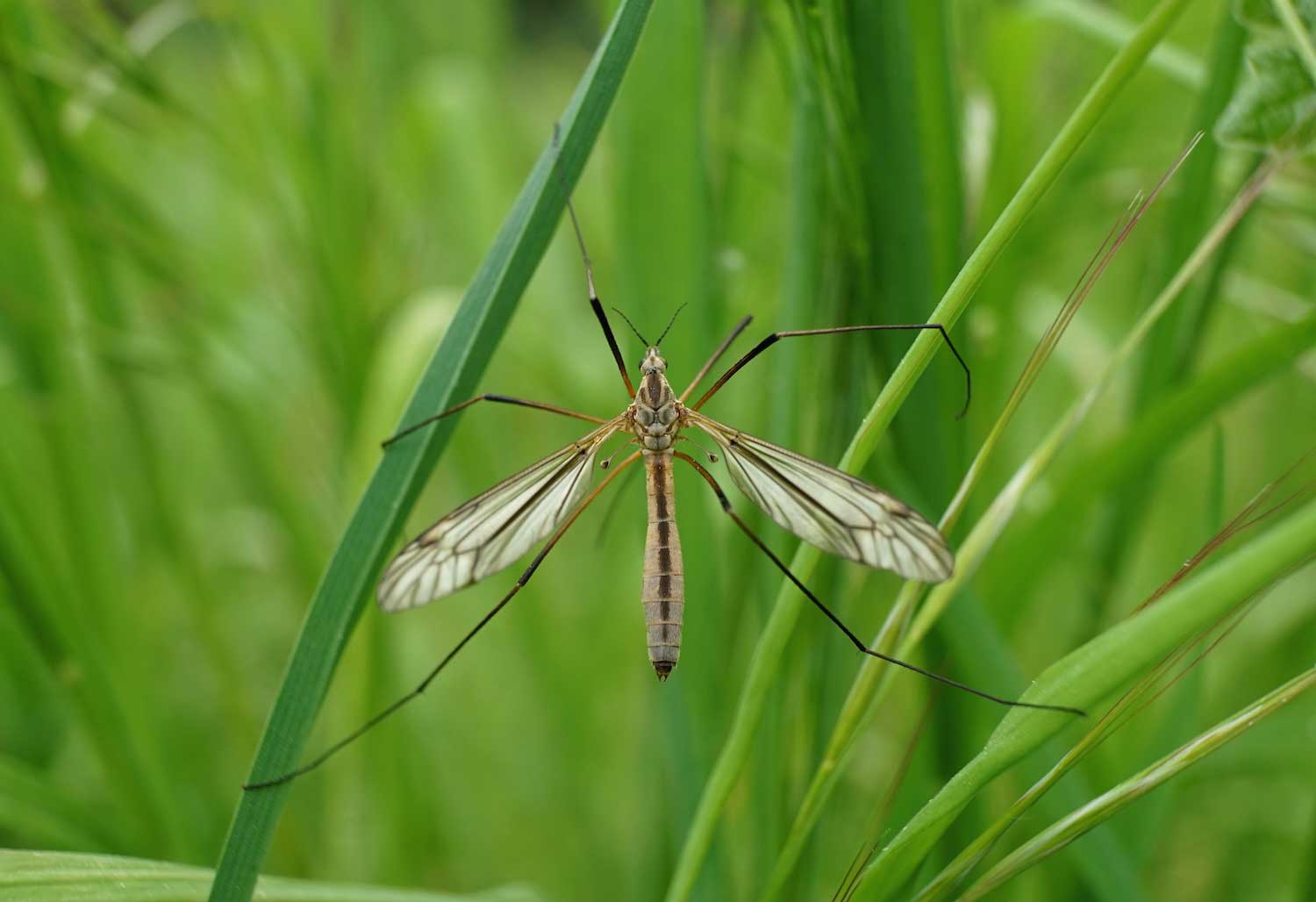Don't swat these bugs! Harmless crane flies aren't super-sized mosquitoes

Don't swat indiscriminately next time you see what you think is a giant mosquito. It might not be a mosquito at all.
Crane flies are often confused with mosquitoes, and as such people often swat them away or squash them at first sight. This isn't necessary, though, because crane flies, sometimes called mosquito hawks, are harmless. They don't bite or sting. In fact, most adult crane flies don't even eat in the final stage of their life cycle, according to Texas A&M AgriLife.
Thousands of species of crane flies inhabit North America, and most do look a lot like very large mosquitoes. They can be as much as 1 1/2 inches long, and they have long, thin bodies, long legs and a pair of delicate wings. What crane flies don't have, though, is piercing mouthparts, and this is how they can be distinguished from mosquitoes, according to the Missouri Department of Conservation. Without mouthparts, they can't bite us like mosquitoes do. It's also why they don't eat, although some crane flies do sometimes sip water or nectar.
Adult crane flies don't live long, only a few days or weeks. Their main goal as adults is to mate and lay eggs. The eggs typically hatch in the fall, and the insects will overwinter as larvae. They spend about 95% of their time as larvae, with this stage of their life cycle lasting as long as three years, according to the University of Arizona.
Crane fly larvae can live in water or on land, usually in moist, damp soil. In Illinois and elsewhere, they can sometimes become a nuisance when they feed on the roots and shoots of our lawns and other grasses, causing patches to become damaged, according to the University of Illinois Extension. As larvae, they feed on plant matter and other organic material in the water or soil, helping with decomposition as they do.
As adults, they can fly, but it's still common to see adult crane flies near water, often streams and ponds. They are also seen in moist woodlands and fields, the Missouri Department of Conservation reports. Adult crane flies often mate and lay eggs near where they emerged as adults. Because different species of crane flies hatch and emerge as adults at different times of the year, it's normal to see these large, delicate flies from spring through fall.
Crane flies serve as an important food source for insect-eating animals both in their larval stage and as adults. As larvae, they are sensitive to pollution, and drops in their population can be an indication of poor water quality, the Missouri Department of Conservation reports.
Like moths, crane flies are attracted to light, so it's not uncommon for them to make their way indoors through an open door next to an exterior light. If they do make their way indoors, you can gently scoop them up and place them back outside, AgriLife advises. Remember, there is no need to squash these harmless insects.
